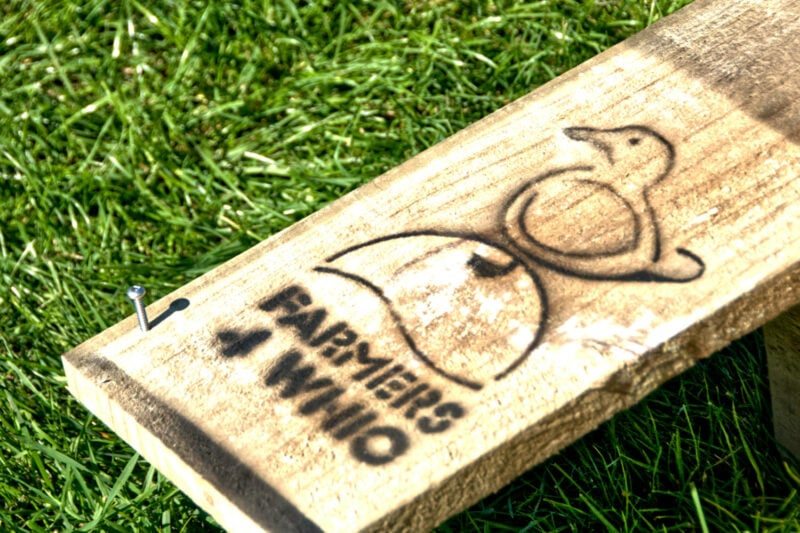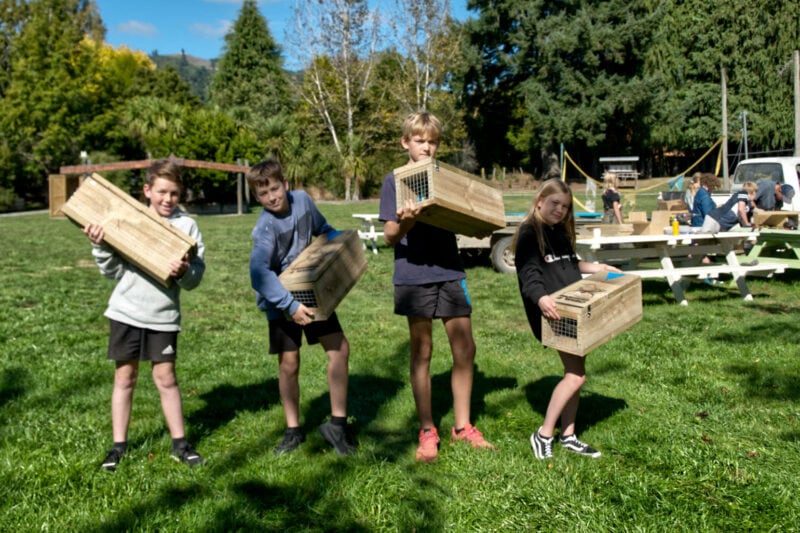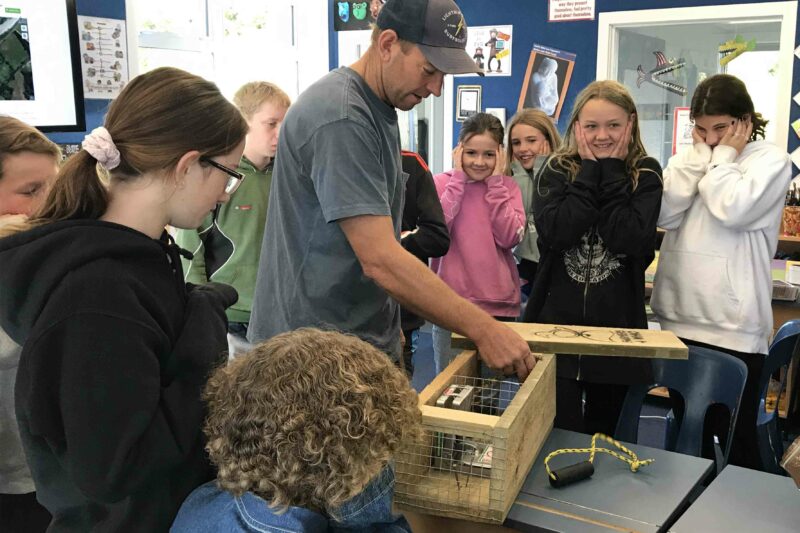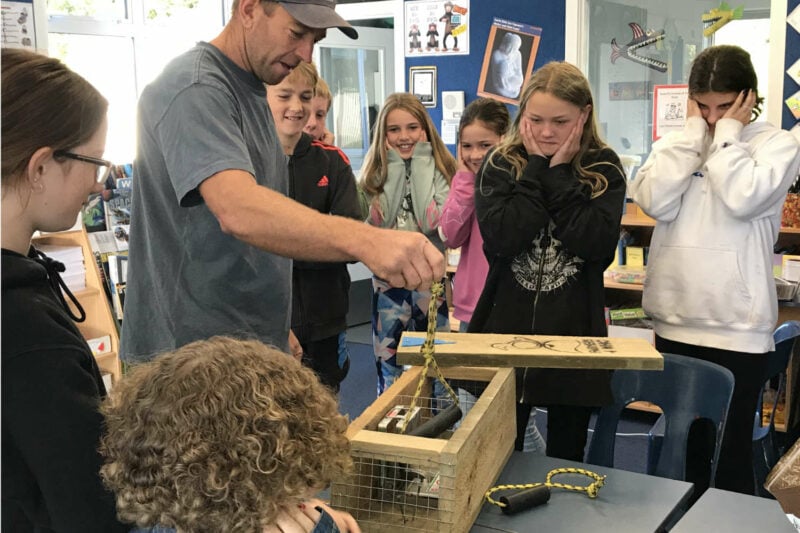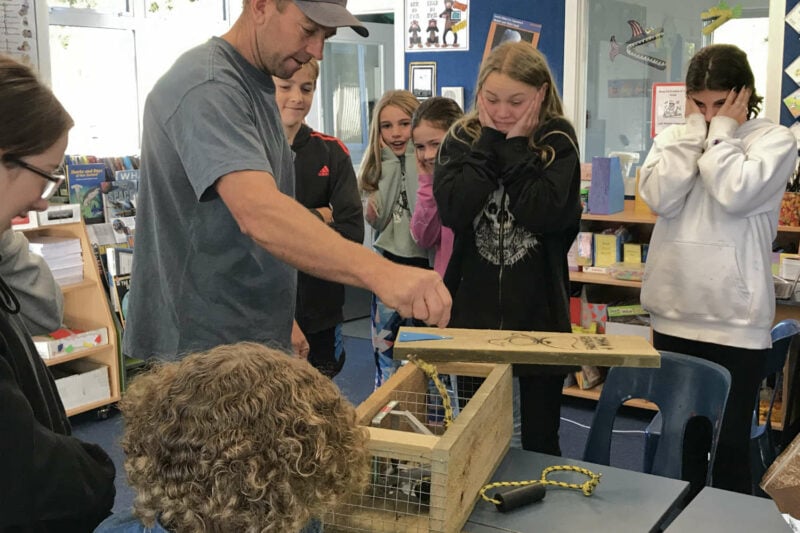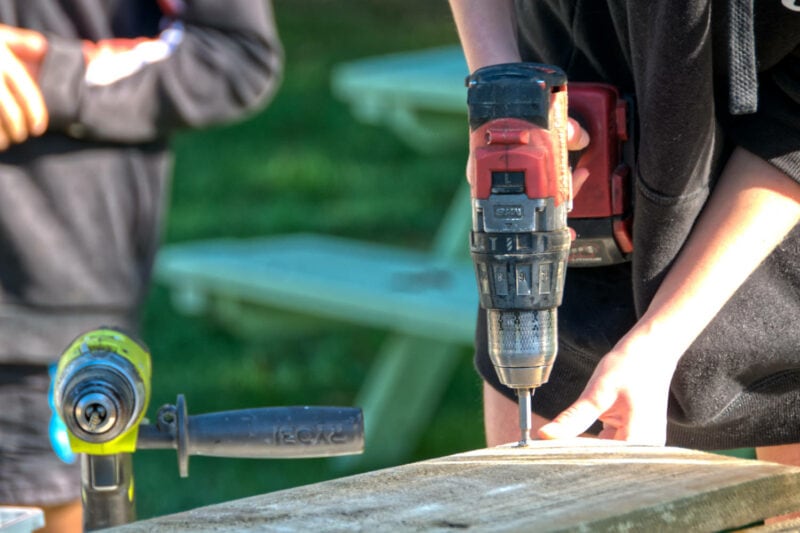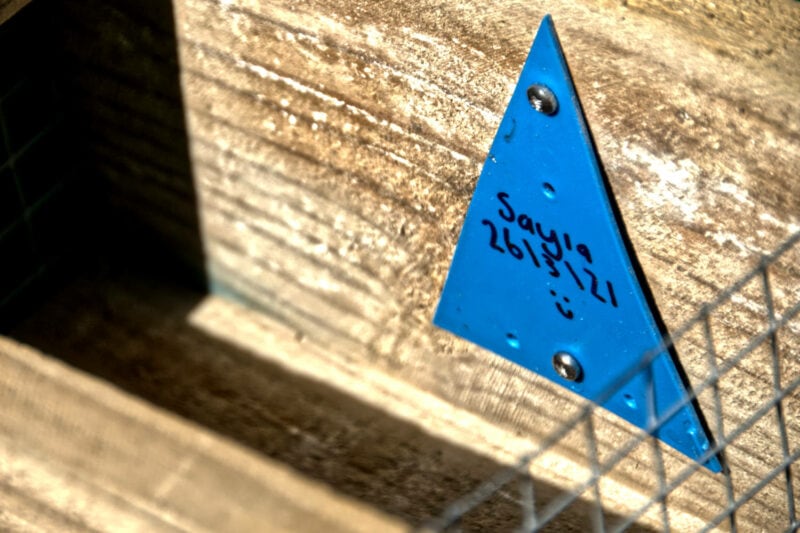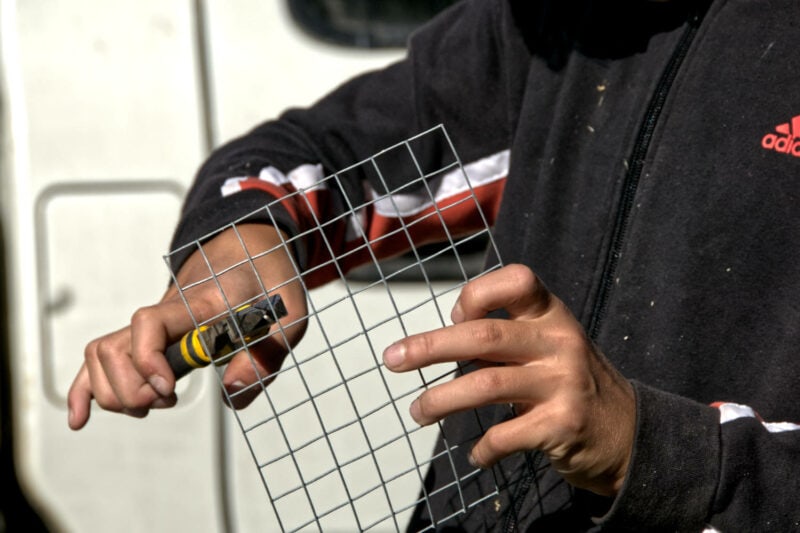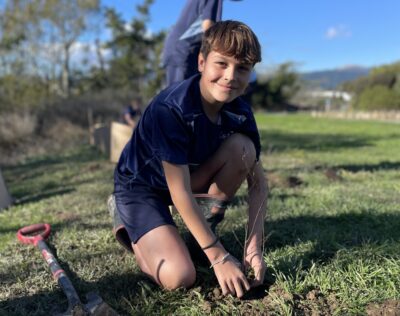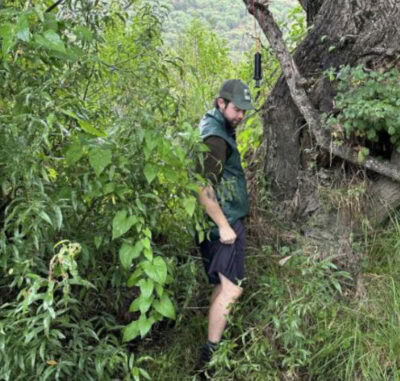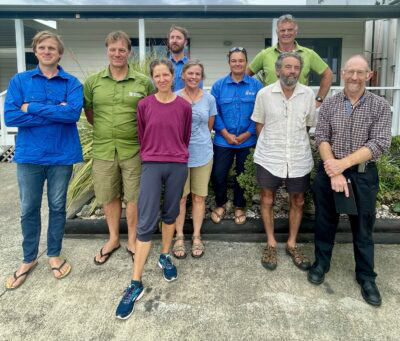During Whio Awareness Month, Farmers for Whio representative Barry Burger visited Ngatimoti School in Tasman to give students hands-on experience with building predator traps. We sent our reporter along for a look.
It’s 8:50am and Ngatimoti School’s Room 5 teacher, Malcolm Hepburn, is marshalling, delegating and multi-tasking like a high-level CEO.
He’s clearly in his element, bantering with his Year 7 and 8 students while desks are moved and forms are collected. He’s also trying to grab a coffee before his guest begins his presentation.
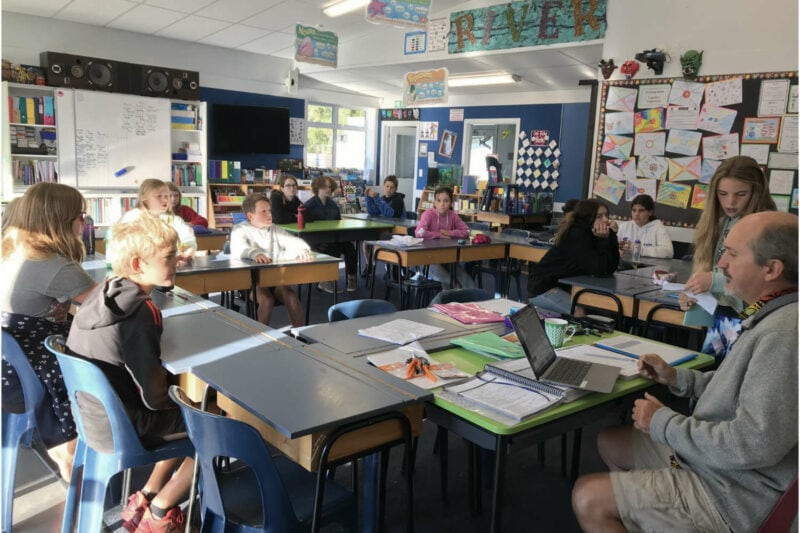
Room 5’s visitor this morning is Barry Burger. He’s representing community conservation project, Farmers for Whio. March is Whio Awareness Month and Barry’s here to talk about whio/blue duck, the challenges they face and the local conservation efforts undertaken to protect them. He’s also giving the students the opportunity to get some hands-on experience with making predator traps.
Cat vs. Stoat!
He kicks off with a PowerPoint presentation. Most of the students seem to have at least heard of whio; Farmers for Whio is their community’s initiative, after all. But when it comes to question time, it’s the predators who are the stars. Do stoats eat other stoats? If a feral cat and a stoat were in a fight, which one would win? Before it all goes too far down the Alien Vs. Predator route, Barry brings out a demonstration trap.
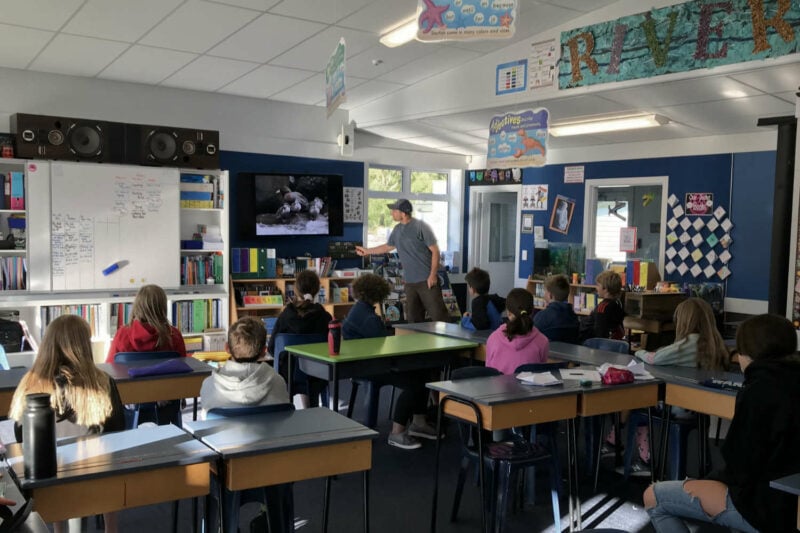
He takes off the roof to show the route the target predator must take, and points out the design safeguards that ensure other animals, like weka, can’t trip the mechanism. He holds up some bait and a few noses crinkle.
After setting the trap, he uses weights to trip it. It’s loud. Most kids weren’t expecting that. Some jump. Others cover their ears. None of them look as if they need convincing about how efficiently the trap does its job.

Ready… 
Set… 
SNAP!
Building predator traps
With the presentation over, it’s time for the practical work. Four students—Chico, Joe, Sayla and Nikau—go outside with Barry to build traps. Their eyes light up when they see they’ll be using power tools. They don safety glasses and earmuffs like pros.
Then it’s full-on construction. Firstly, they name their blue triangles and screw them to what will be one of their box’s inside walls. Next, they build the boxes themselves. Finally, they cut wire mesh and secure it to the trap with staples. They all support and help each other at every step. It’s wonderful to witness.
Barry says the traps built today will be used for a new trapline that will be set up just outside the school to cover a section of the Motueka River.
“We’ll put the traps out and then once a month we’ll take a couple of kids and go and check them and record the data, see what we’re catching,” he says. “There’s also a wee side stream that the school looks after—they’ve helped plant it all up—and we’ll put some traps down there as well.”
Once construction is complete, the traps are painted with the Farmers for Whio logo and left to dry.
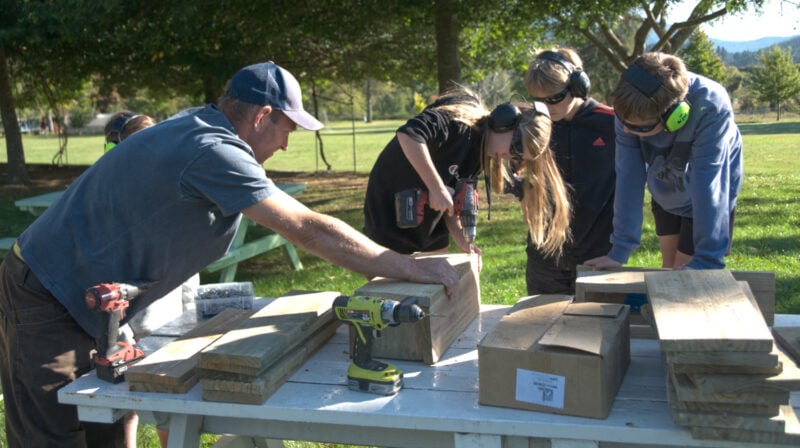
An environmentally-focused school
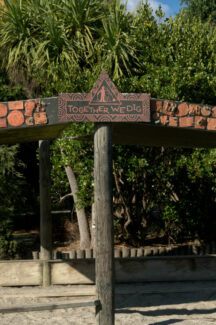
Ngatimoti School, an Enviroschools Green-Gold recipient, is deeply committed to caring for the environment. Conservation is a built-in curriculum subject.
“I’ve had a vested interest in environmental education for many, many years,” says timuaki (principal) Ali Turner. “We started as a pilot school with Enviroschools in 2002, so it’s been 19 years since we first [became involved with] with the project.”
In that time, various teachers have brought different ideas and passions that they’ve been able to run with, so they’re expanding their knowledge and experience as well as the students.
“It becomes a really big community of learners,” she says.
Preserving whio, growing humans
The four student trap-builders are now enjoying the break they missed earlier but they’re still keen to show off their work and talk about the experience. The problem is that no-one wants to go first. In the end, Nikau takes the plunge.
What stuck most in his mind from Barry’s talk earlier? “That 90% of whio chicks aren’t successful because of predators going and eating the eggs.” What does he think about that? “It’s not good,” he says. “We need to get rid of lots of the predators and get all the whio back to normal.”
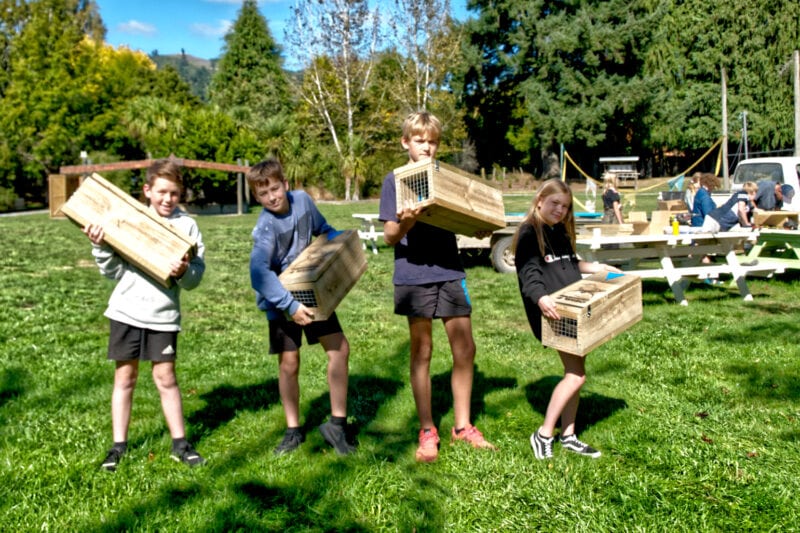
The four pose for a photo with their traps, and then head back to class. Barry is working with the second group of trap-builders, who are already making great progress. And Room 5 teacher Malcolm Hepburn volunteers two of the boys to help carry my gear back to my vehicle. When we get there, they thank me for coming.
This cool little school isn’t just working to preserve the future of whio—it’s helping to produce great human beings as well. If these kids are anything to go by, the future of community conservation along the Motueka River is in great hands.
